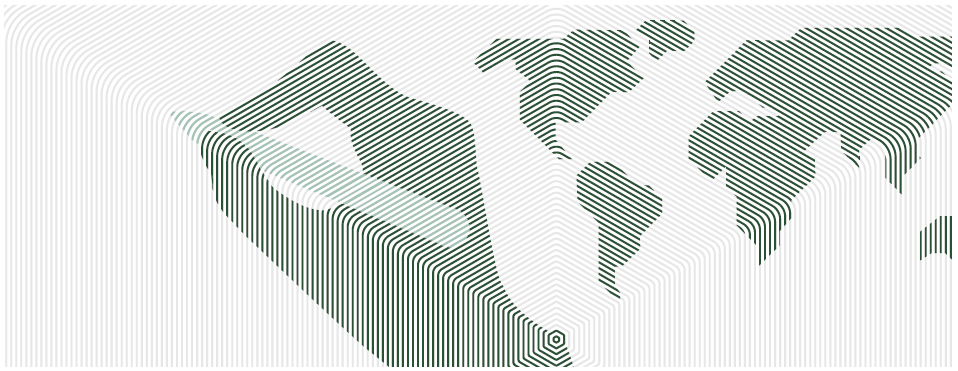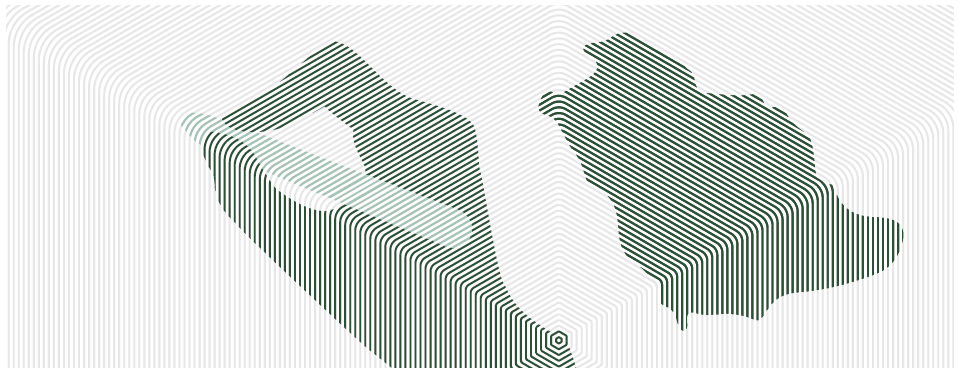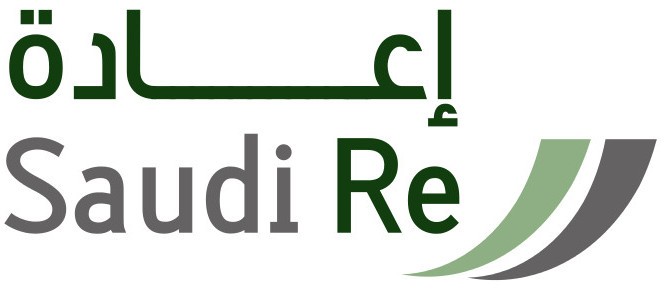BUSINESS CONTEXT, STRATEGY, AND PERFORMANCE
Market Review
7.1 Global context
The global economy is on a rebound from the contraction of 3.2% it suffered in 2020, owing to the COVID-19 pandemic. The World Economic Outlook (WEO) Report (January 2022) estimates a global growth of 5.9% for 2021. The expected growth rates vary widely across countries and regions, with vaccine access being a major determinant.
The growth in economic activity in the second quarter of 2021 was stronger than expected, but subsequently there was the impact of the Delta variant. The emergence of the Omicron variant led to increased mobility restrictions and financial market volatility at the end of 2021. It has also dampened expectations for 2022. Worsening supply constraints have put greater pressure on vaccine rollout to control the pandemic. However, vaccine resistance is likely to limit vaccination rates in many countries to 70-80%. Despite the risks posed by Omicron, generally speaking governments have shown a reluctance to rush back into lockdowns. Vaccination rates in major developing economies and emerging economies are likely to remain below 50% until 2023.
Global stock markets have generally turned in a solid performance in 2021, as they did in 2020, despite the impact of the pandemic still continuing. MSCIs World index has increased by 21.82% driven by COVID-19 recovery, and massive support from central banks that have continued to flow. The S&P 500 has increased in value by 27%, while Nasdaq 100, which heavily weights tech stocks, was up by 26.63%.
European banks recorded a stellar performance with the SX7P index notching a 34% gain. Emerging market equities however, performed dismally, losing 2.54% in value as indicated by the MSCI Emerging Markets index. The main cause was a 30% drop in Hong Kong listed Chinese tech stocks.
The performance of commodity markets too has been outstanding. With a return to near-normalcy in some of the largest economies, oil and natural gas prices surged by 50% and 48% respectively, but still remained below pre-pandemic levels. Copper, Zinc, and especially Aluminium have also recorded impressive gains. There has been a slump in gold prices, whereas agricultural markets have boomed.
Supply constraints have been another drag on the economic recovery. There have been a number of contributory causes including pandemic induced travel and transport restrictions, underinvestment in transport infrastructure and electronics production, and resistance of labor to return to some high-risk areas. Some resulting constraints have been lack of shipping containers, port closures, shortage of computer chips, shortage of truck drivers, and electricity shortages. Supply bottlenecks are likely to continue into 2022, and possibly even 2023.
The WEO report projects a global growth of 4.4% for 2022. The biggest uncertain factor is China, which is the most significant driver of growth. There are also concerns regarding increasing inflation, particularly in developed countries. While there are clouds on the horizon, the expectation for the advanced countries remains one of cautious optimism. The Russian – Ukrainian conflict is having an impact which stretches far beyond their borders. It is having a severe impact on prices of commodities such as wheat, petroleum, and gas, which is causing a surge in inflation.
7.2 Global/Regional reinsurance context

The year 2021 saw a surge in catastrophic events, notably flooding in Europe, Hurricane Ida, and severe storms in the US. The insured catastrophic losses in 2021 are estimated to be the fourth highest since 1970. The projected total large loss was over USD 100 billion, with Hurricane Ida alone accounting for nearly USD 30 billion. Business and operating models are evolving rapidly, creating new risks such as cybercrime and supply chain disruption. Pandemic related costs and low interest rates are also placing additional stress on insurers and reinsurers and accordingly influenced pricing, risk appetite, underwriting practices and capacity supply.
Globally, the renewals on 1 January 2022, reflected changing market conditions as reinsurers adjusted risk appetite and pricing thresholds in response to ongoing and emerging challenges. Reinsurers continued to expand client differentiation based on individual placement characteristics. There was also differentiation based on loss-impacted and non-loss impacted programs.
Advanced preparation, planning and managing clients’ expectations were critical to achieving satisfactory renewal outcomes. Identifying key renewal drivers and alignment with partner appetite led to better pricing and capacity allocations.
The Middle East and North Africa (MENA) insurance market has been affected by numerous factors since 2020. COVID-19 has resulted in an economic slowdown, which has had a negative impact on insurers and led to increased pricing and reduced capacity in many areas. In the present context, when companies are focused on reducing costs, this is having an adverse impact on local markets.
In MENA, most local insurers are generally not able to act as a leader on large insurance programs due to limited local capacity, which has led to increased dependence on the reinsurance market. However, the international reinsurance market itself is transitioning, and seeing widespread increased rates and reduced capacity. Larger insurance programs placed in MENA are also impacted by these changes; international reinsurers are taking a smaller share of many risks in the MENA region. Additionally, reinsurers are becoming more selective on the risks they do reinsure, and are applying more exclusion – for example, around pandemic-related claims. Reinsurers have also become more stringent on premium payment, in order to improve liquidity and control bad debt reserves.
As rates increase in many different parts of the MENA region, risk management will assume even more importance, especially as many companies look to restructure their insurance programs and, in some cases, retain more risk.
7.3 Local context
The Saudi economy was forecasted to grow at 2.9% in 2021, after contracting by 4.1% in 2020. A major driver of this growth is the non-oil sector, which is forecasted to expand by 3.5%. This aligns with the Kingdom’s Vision 2030, one of the major objectives of which is diversifying away from oil-dependence. A non-oil sector that is showing strong growth is the real estate sector. This is being driven by the goal of reaching 70% home ownership by 2030. The non-oil industrial sector also performed well, with close to 500 factories being commissioned with a job creation potential of 30,000. The oil sector, including petro-chemical products, has also recorded significant growth, bolstered by relaxation of production cuts and higher prices.
The GDP of the Kingdom expanded by 6.8% in the fourth quarter of 2021, compared to the corresponding quarter in 2020. For the year as a whole the growth over the previous year was 2.9%. The Saudi economy ranked second among the G20 countries in terms of economic performance. The growth was heavily driven by higher oil prices. The oil sector and the non-oil sector grew year-on-year in the third quarter by 9% and 6.2% respectively. Sectors such as travel, restaurants and entertainment picked up during the year and this growth is expected to continue. Public debt recorded an increase from SR 854 billion at the end of 2020 to SR 923 billion at the end of the first half of 2021. New debt of SR 96 billion was issued this year which is sufficient to cover the fiscal deficit for 2021.
A growth of 7.4% is forecast for 2022, though there is uncertainty surrounding how oil prices will move. A fiscal surplus of SR 90 billion, or 2.5% of GDP, is forecast for 2022. In 2021 the estimated deficit is 2.7% of GDP. The expected surplus in 2022, will be the first since the collapse of oil prices in 2014. The easing of the pressure of COVID-19 expenses is also expected to contribute to the growth in GDP, and the fiscal surplus.
Local content development, as an important growth driver in Vision 2030, has gained momentum in many sectors including the insurance sector with the aim of localizing the production of goods and services to raise competitiveness and increase socio-economic value.
Several giga projects are in the pipeline which will drive the growth of the Saudi economy in the years to come including Neom, AMAALA, and Qiddiya. The Red Sea Project, being executed by the Red Sea Development Company, is an ambitious regenerative tourism project. It is a project that will blaze a new trail in combining tourism with preserving the natural environment. It will expose visitors to the natural beauty and rich cultural heritage of Saudi Arabia’s Red Sea Coast.
Also, Jeddah Downtown project was announced to develop 5.7 million square meters in central Jeddah with an investment of SR 75 billion.
The National Industrial Development and Logistics Program (NIDLP) is one of the programs launched under Saudi Arabia’s Vision 2030. The NIDLP envisions transforming the Kingdom into a global industrial and logistics hub, in four targeted sectors: industry, mining, logistics and energy. It is focused on embedding industry 4.0 and is projected to create 1.6 million jobs.
7.4 Local insurance and reinsurance context

The Saudi insurance market is among the largest and fastest growing insurance markets in the region, benefiting from a progressive G20 economy and favorable regulatory environment. The Kingdom enforces mandatory insurance for certain categories of risk. All vehicles must have at least third party liability insurance cover. The Saudi Government mandates private health insurance, or expat health insurance, for all foreign nationals and expatriates residing in the Kingdom. Private sector employers should provide cover for all employees, and their family members who are residing in the Kingdom.
Inherent Defects Insurance (IDI) became mandatory for all non-government construction projects, with a ten-year cover, in the Kingdom from 2020. This will ensure the mitigating of infrastructure risks, and will give clients of cedants more assurance of the quality of buildings. Saudi Re has been granted exclusive reinsurance of the IDI program.
Led by the Saudi Central Bank, new lines of insurance were introduced in 2021 including employers default liability, event cancelation liability, drones liability, COVID-19 travel insurance, self-driven motor insurance and domestic helpers insurance. Other lines of business under development include insurance for domestic helpers and third party liability on high risks and crowded sites.
As part of the development of the regulatory framework, the Cooperative Insurance Control Law has been amended in 2021 to set a new minimum capital requirement of SR 300 million for insurance and reinsurance licensees.
Gross Written Premiums in Saudi Arabia for the year 2021, was reported at SR 40 billion, as against SR 37 billion in 2020, an increase of 9%.
The reinsurance market in the Kingdom witnessed correction in pricing and underwriting terms; however with the flow of cross-borders activities the market remains competitive.
7.5 Key market drivers and Saudi Re response
The (re)insurance market is witnessing new social, economic and regulatory norms driving market players to adapt. The market is generally still characterized by stiff competition and puts pressure on companies’ earnings. Considering the various market dynamics and with aim to strengthen its competitiveness, Saudi Re has developed its Strategy Towards 2026 which focuses on solidifying its presence in its home market as well as diversifying in international markets.
One of the key challenges for reinsurers is the increasing frequency of catastrophic events. With the impact of climate change, such events are likely to become more and more frequent. This will doubtless have an impact on how underwriters assess risk in the future. On the other hand, the increasing catastrophic risk brings new opportunities for reinsurers, as primary insurers will consider it prudent to take cover against such risks. Risks are also being posed by the increasing complexity of macroeconomic conditions. Digitalization has tremendous potential to bring improvements in analysis; thereby in risk-assessment and pricing, since much of the industry is yet to adopt the latest technology.
In June 2021, Saudi Re signed a new agreement with RMS, the World’s leading catastrophe risk solutions Company, to adopt RMS CAT modelling solutions. This will provide a more comprehensive view across the Asian market, and will enhance risk analysis across a wide geographical spread including India, China, and the Philippines.
The impact of COVID-19, and the resulting health crisis, has increased the demand for health insurance. The changing work practices have increased risks such as cyberattacks. With more and more employees working remotely, an insecure home internet connection can make a company vulnerable to a large scale cyberattack. The pandemic has raised the issue of whether pandemic – induced losses are covered under business continuity policies. This depends on the terms of the policies but also to some extent it is subject to interpretation by the courts.
Throughout the insurance and reinsurance industries, COVID-19 is driving the digitization of business and operating models. The trend is happening across the front, middle, and back offices. The pressure for insurers’ capabilities to match customer needs, is also contributory to this. At the same time, in light of the increasing threats of cyberattacks, information security and data privacy became a key priority for the sector. In response to this, Saudi Re has crafted its digital transformation to cope with the digitization demands which focusse on transforming into a flexible and advanced digital infrastructure and acquiring sophisticated tools for better service delivery. Saudi Re has also updated its cybersecurity strategy and framework to cope with this challenge in alignment with the relevant regulations of Saudi Central Bank and other regulatory bodies.
Insurers and reinsurers are becoming increasingly conscious of ESG considerations. Risk management is a key factor driving this trend. Many insurance companies invest for the long term, while risks such as those arising from climate change can be short term. Therefore ESG factors pose serious risks to them. The Net-Zero Insurance Alliance, convened by the UN, has as its membership 15 of the World’s leading insurers and reinsurers. They are committed to transitioning their portfolios individually, to net zero GHG emissions by 2050.
Saudi Re has restructured its sustainability approach to evolve around ESG principles and has been among the first companies to issue a sustainability report. Since Saudi Re follows Sharia principles, sustainability is built into its investment practices. Saudi Re avoid investing in businesses that have adverse impacts on society; Saudi Re business activities promote equality, inclusion, and economic prosperity. The (re)insurance industry is undergoing changes in regulations and accounting standards. IFRS 17, originally issued in June 2017, has broad impacts on insurance and reinsurance. IFRS 17 provides updated information about the rights, obligations, risks and performance arising from insurance contracts. It also increases transparency in financial reporting by insurance companies, and ensures consistent accounting for all insurance contracts, based on a measurement model. The Saudi Organization for Certified Public Accountants (SOCPA) has adopted IFRS 17 amendments in addition the Central Bank has put in place a roadmap for the sector to ensure a smooth transition toward the new standards. In compliance to this, Saudi Re is progressing in the adoption of the new standards and has completed the implementation of a new engine, which will facilitate the transition and enable the production of the financial statements in line with the new requirements.
In general, Saudi Re regularly performs assessment of the market tends and emerging risks through its enterprise risk management framework and strategic planning framework. In addition, the governance structure of Saudi Re ensures the protection of the rights of shareholders and other stakeholders. It also ensures compliance with the laws, regulations, and directives issued by the regulatory bodies.
Saudi Re has crafted its digital transformation to cope with the digitization demands which focuses on transforming into a flexible and advanced digital infrastructure and acquiring sophisticated tools for better service delivery.





